Kuwfi: Review, Setting, Reviews. Wi-Fi Adapter with a High Reception Reinforceement Coefficient
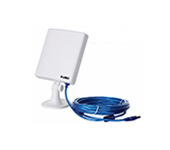
A long time ago I ordered one interesting device on AliExpress – a high-gain Wi-Fi adapter called KuWfi. There are plenty of such goodies on Ali. I didn’t bother much, I ordered the first one that caught my eye. And they are all about the same, only the names differ and a little price. You can find them by searching for “USB Wi-Fi High Gain Adapter”. They are sold not only on Ali, but also in other popular online stores. Even in our stores you can probably find them, but most likely the price will be higher.
If you have not yet understood what we are talking about, now I will explain. This is an ordinary USB Wi-Fi adapter (receiver), which can be used with desktop computers and laptops. After connecting this adapter on your computer, you can connect to Wi-Fi networks. Only unlike the usual adapters, which I wrote about in the articles how to choose a Wi-Fi adapter for PC and how to connect a regular computer (PC) to a Wi-Fi network – these are different in that they have a built-in antenna with a high gain reception. And the adapter immediately comes with a long USB cable (5-10 meters). Plus these adapters are protected from moisture and can be installed outdoors. In the kit there is a mount with which the adapter can be mounted on the wall.
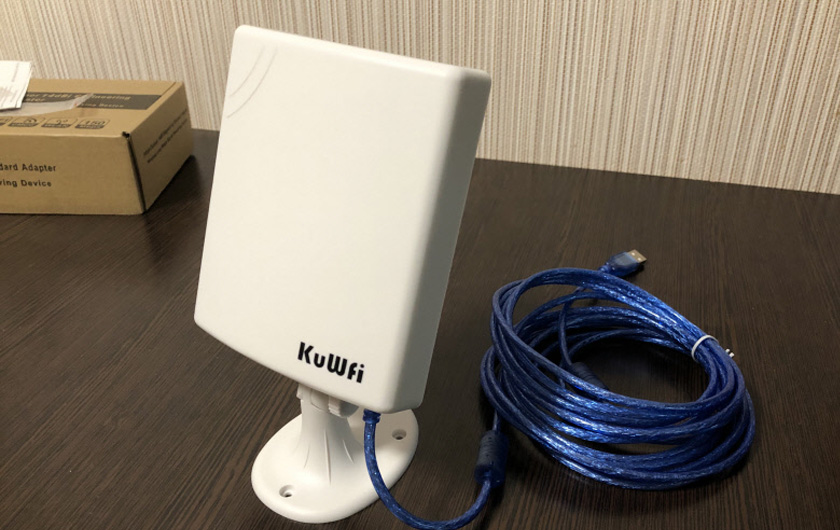
I have already ordered regular USB Wi-Fi adapters from AliExpress and talked about them in the article wi-fi adapter from China: choice, review, whether to buy. But compared to regular adapters, these don’t come cheap. My KuWfi with a cable of 5 meters cost almost 20 dollars. For this money on our market you can buy an ordinary, not bad USB receiver. And it will be a branded device. For example, TP-LINK Archer T2U Plus. It will also be equipped with an external antenna with a gain of 5 dBi. Plus it has support for the 5 GHz band, and in the 2.4 GHz band, speeds up to 200 Mbps. And in our KuWfi, the seller claims an antenna with 14 dBi gain. There’s no 5 GHz support and the speed in the 2.4 GHz band is only up to 150 Mbps.
Yes, all the pros are in the direction of TP-LINK Archer T2U Plus, or any other branded USB Wi-Fi receiver for the same money I spent on KuWfi. But there is one nuance – we have then High Gain, or High Poower Wi-Fi Adapter, which has a powerful 14 dBi antenna installed. And the main task of these adapters is to catch Wi-Fi signal at a great distance from the access point (router). Where the usual adapter does not see the Wi-Fi network. That’s why they are called adapters with high reception gain. Well and the pole due to the long cable itself adapter can be raised higher, or generally installed on the outside of the house or apartment. After all, if these Wi-Fi adapters are protected from moisture, then they can be installed outside. In the characteristics it is written that the adapter type: external.
Perhaps these adapters are used for other tasks. For example, to transmit Wi-Fi signal over a long distance. When we install two adapters, we configure one as an access point and the other as a receiver. But for these tasks there are other devices – outdoor access points. And this is a receiver for connecting PCs and laptops to a wireless network in places with a weak signal.
Since I’ve already bought this KuWfi, let’s take a closer look at it.
KuWfi Wi-Fi adapter review
The kit contains the adapter itself with a 5 meter USB cable (the cable is not removable), instructions, a stand/wall mount, a disk with drivers and utility.
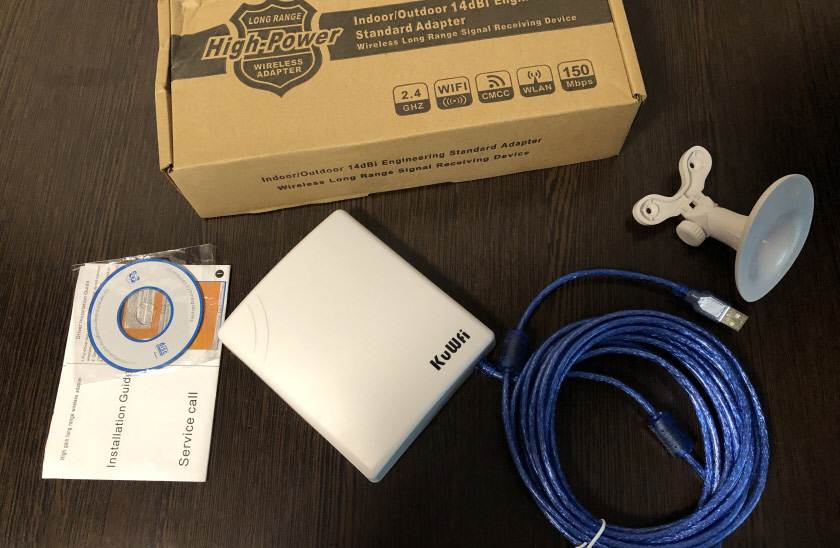
I decided to take it apart and see what’s inside. And there’s just a small board (wi-fi module), to which the wires from the USB cable are soldered and the cable that goes to the antenna is soldered.
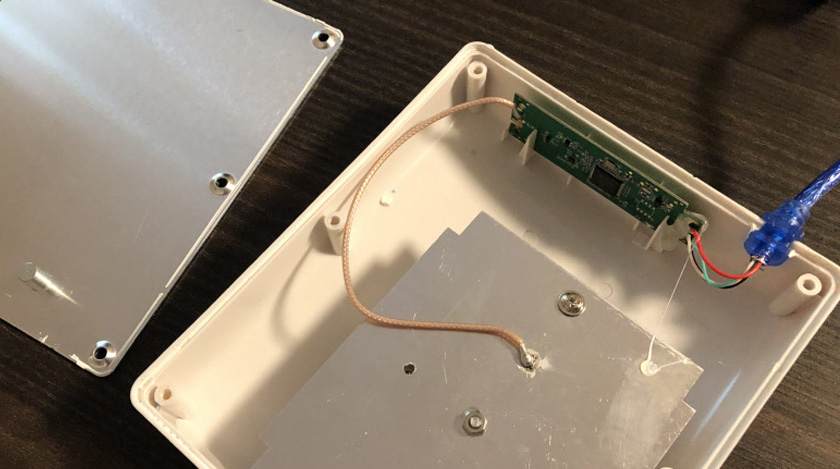
Here is such a wi-fi module:
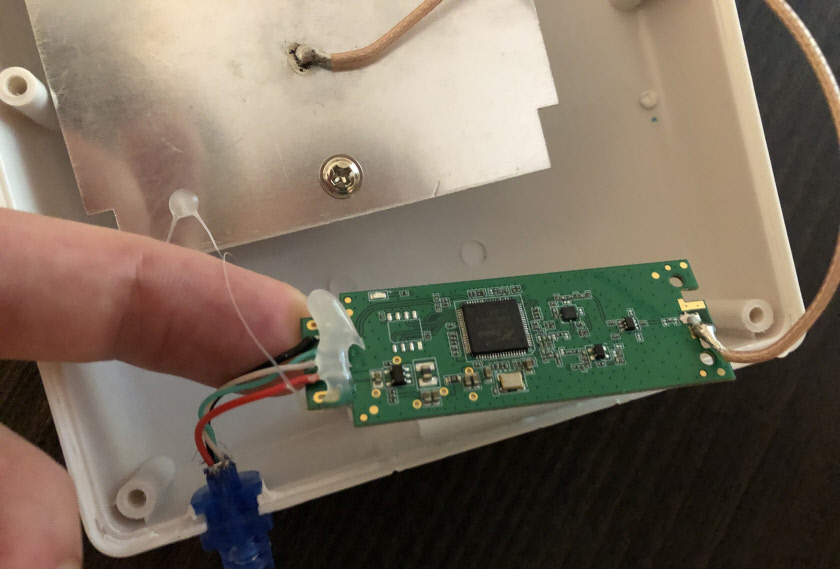
And here’s the antenna (the specs say 14dBi gain):
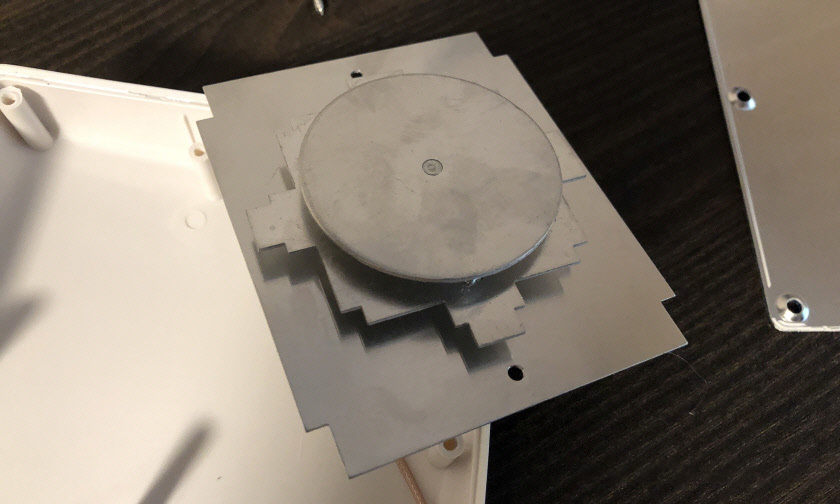
I don’t think anyone is much interested in what’s inside. When we buy such a device, the main thing for us is how it will work and cope with its task.
Setting up a high-gain KuWfi adapter
I configured KuWfi in Windows 10. In my case it worked immediately after connecting it to the laptop (I disconnected the built-in module). In the Device Manager it was detected as 802.11n USB Wireless LAN Card.
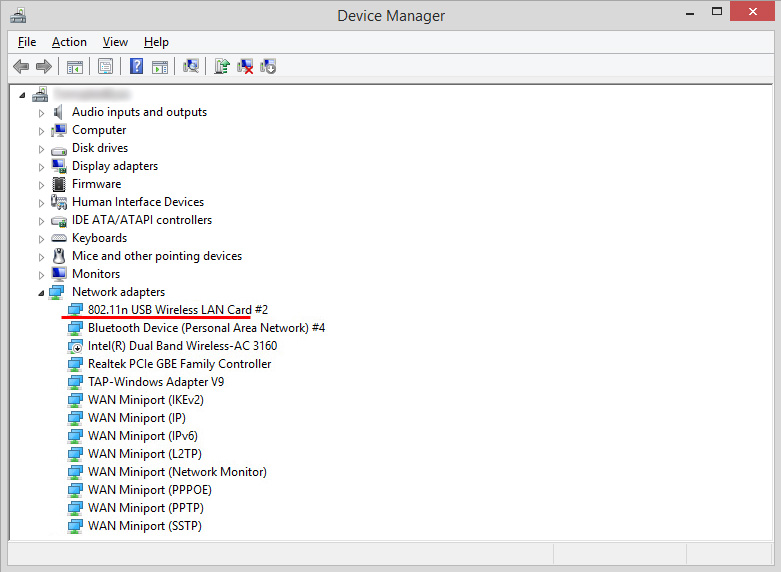
I decided to install the driver and utility from the disk. And strangely enough, the driver and utility were installed. The utility even started. I thought that it would not work in Windows 10.
There you can see information about available networks, about the network to which the adapter is connected, see the signal quality, and as far as I understand – to start a wi-fi access point. When KuWfi will distribute Wi-Fi network to other devices.
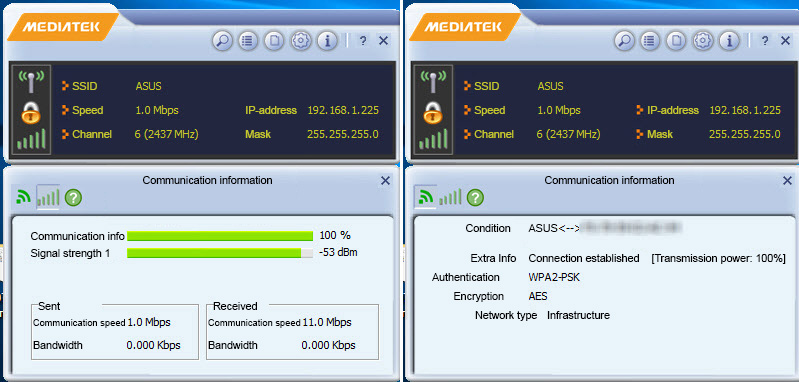
Judging by the name of the utility, this adapter has a Wi-Fi module from MediaTek.
There were no problems with the configuration, which can not be said about connecting to Wi-Fi networks and further work. But I suspect that the adapter in my case could work unstably due to poor power supply on the laptop’s USB ports. Especially through such a long cable (5 meters). In general, I do not recommend connecting adapters and modems through such long USB extensions. And in this adapter the cable is soldered to the board. It would be better if they made a short cable and put an extension cord in the kit. I’ll test it on my PC and add to the article.
Does it boost wi-fi reception?
Yes, when connected to wi-fi through this high gain adapter, reception is boosted by 10-20% compared to the built-in adapter in the laptop. I was expecting more than that. In normal mode, when the signal from the router is normal (not far from the router) – the difference in signal strength is almost imperceptible. If you look at the signal divisions in Windows, there is one division more through KuWfi, or the same as through the built-in adapter.
At a distance, when the signal is very poor, reception is better through the KuWfi adapter. Here’s the reception level through the built-in adapter:
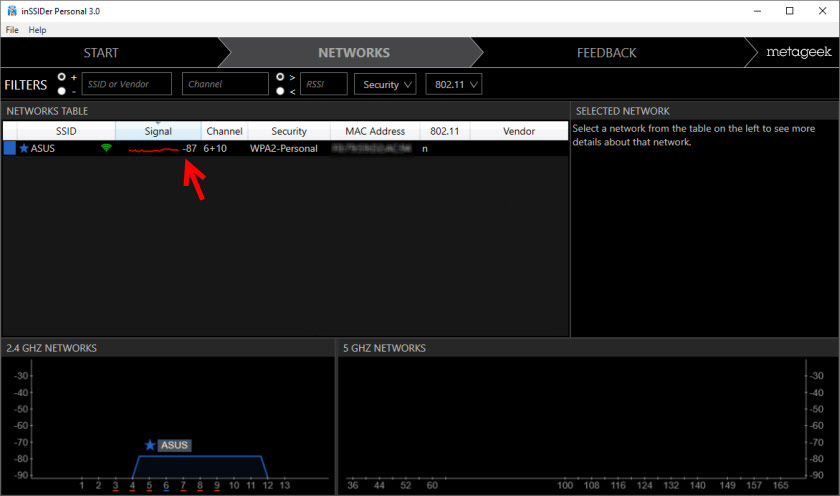
And here’s through the KuWfi:
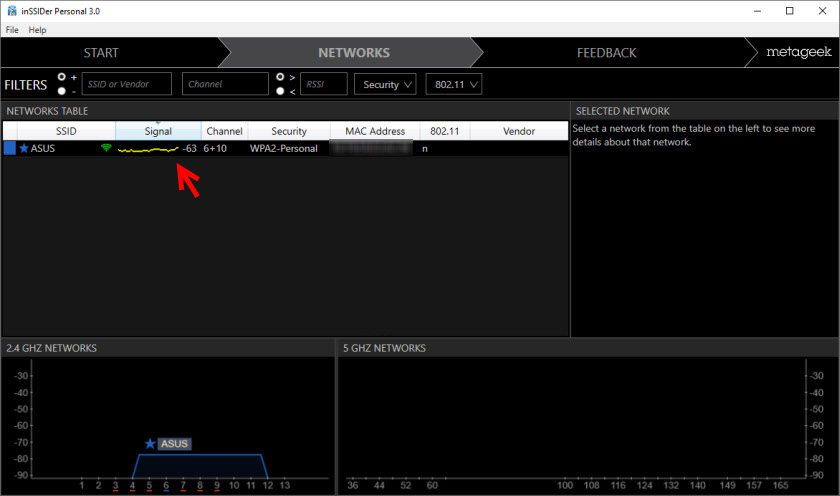
The adapter should definitely be pointed strictly towards the access point.
Yes, it enhances reception. But it turned out that the connection stability and speed through the built-in adapter is better. Even with weaker signal strength.
My review of KuWfi and similar adapters
It seems to me that it makes no sense to buy such adapters for a regular connection to a Wi-Fi network. It ‘s better to buy some branded adapter with an external antenna (or even without it) for the same money. You can also buy a 1.5/2 meter USB extension cord to raise the adapter higher and thus get better reception.
KuWfi and other adapters with high gain (powerful antennas) may make sense to use for Wi-Fi reception from transmitters in the open. When, for example, a router (or outdoor access point) is installed in one building, and from the outside of another building we install KuWfi (or other similar adapter), connect to the computer, point it towards the access point and connect to the Wi-Fi network. In reviews I saw information that it receives a signal at a distance of 1 kilometer. But I think that this is an unrealistic task for these devices. And despite the fact that the adapter seems to be protected from moisture (when I disassembled it, the cover was glued on some sealant), it is unlikely to work for a long time in the cold and wet weather.
As for signal amplification and the use of these devices, I think we’ve figured it out. But there is one more nuance – speed and stability of work. Because of the long cable (there are such adapters with a 10-meter cable), it is unlikely that it will work stably. Especially under load. And as I understand, they are not very new and certainly not the most productive chipset. And the speed of Wi-Fi connection is up to 150 Mbps. And if we take into account the fact that the channels at the frequency of 2.4 GHz are very busy now, we can forget about normal speed when connecting through such an adapter.
Frankly speaking, I still don’t understand why we need these High Poower adapters and for such money. If you know any ways to use them (where they really work) – write in the comments. There you can also share your experience with such devices, or leave a review about your adapter. My opinion (at the moment) is that this is unnecessary Chinese nonsense, which has no advantages over conventional adapters.

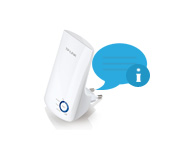 TP-Link TL-Wa850re: Review and Reviews
TP-Link TL-Wa850re: Review and Reviews  TP-Link TL-WPA4220KIT: Review and Reviews ABOUT POWERLINE Adapters
TP-Link TL-WPA4220KIT: Review and Reviews ABOUT POWERLINE Adapters 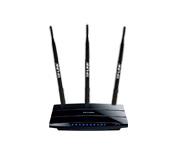 Installing and Testing Wi-Fi Antennas TP-Link TL-ANT2408CL. We Strengthen The Wi-Fi Signal
Installing and Testing Wi-Fi Antennas TP-Link TL-ANT2408CL. We Strengthen The Wi-Fi Signal